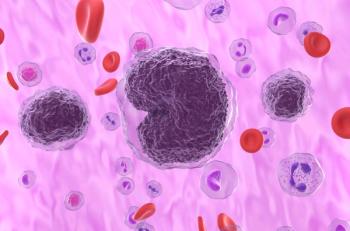
Assessing Comorbidities in Eosinophilic Esophagitis
Investigators in Spain evaluated symptoms and comorbidities associated with eosinophilic esophagitis.
A recent correspondence published in
Esophageal alimentary impactions (EAI) are the most common symptom that leads to EoE diagnosis in adult patients and is the most common cause of dysphagia in children and young adults with the condition, authors wrote. This symptom, along with mucosal tears and esophageal perforation (EP) may require urgent intervention in patients, they noted.
As opposed to atopic comorbidities of EoE, which are common, digestive comorbidities are less studied.
In the research letter, authors conducted a review of available research on this subject and presented findings of a 12-year review of patients presenting to an allergy-specific clinic in Spain.
Researchers highlighted their data are similar to that compiled by the review, as they found 15% of patients were diagnosed before age 18 and 76% were male. The majority of their patients presented with a history of atopy with EAI and/or dysphagia.
Both retching and vomiting were cited as risk factors that can trigger complications like tears and spontaneous EPs, which can lead to emergency department visits.
One study assessed revealed that in the majority of patients presenting with EAI, the symptom was associated with underlying EoE. As such, “EoE should be considered in all pediatric patients with EAI and performed esophageal biopsies during endoscopic management of EAI,” authors wrote, despite a lack of consensus on this recommendation the literature.
In their clinic, researchers reported impacted patients had mucosa tears following urgent esophagogastroduodenoscopy (EGD)—a process used to remove impacted food resulting from EAI. Most patients reported favorable outcomes, although 3 patients over the 12-year period reported EP. All 3 successfully recovered after treatment with intravenous antibiotic therapy combined with a proton pump inhibitor drug.
Conservative treatment of PE in this patient population is preferred over surgical treatment when possible, they noted.
One patient in the clinic also presented with active EoE and a lung abscess that required hospital treatment for a month.
“The presence of transmural extension of eosinophils leads to intense inflammation, fibrosis, and remodeling, affecting esophageal dispensability and integrity, probably predisposing to rupture,” researchers explained. In a young patient with spontaneous EP, “EoE should always be ruled out as subsequent treatment may prevent recurrent perforation.”
Additional findings point to the potential role of Helicobacter Pylori (HP) infection as a protective factor against EoE, although results are controversial with some experts concluding the infection should be considered a biomarker for atopic diseases.
Seroprevalence for HP infection is around 87% in Spain with the comorbidity seen in one quarter of patients at the studied clinic.
Cases of gastroesophageal reflux disease (GERD) have also been seen in EoE, although this co-occurrence is rare.
Furthermore, presence of fibrostenosis can lead to esophageal and functional alterations and this symptom usually indicates active untreated EoE.
Findings of the single-center analysis may not be generalizable, researchers cautioned. However, physicians should be suspicious of previously unrecognized or untreated EoE in any male, young, atopic patients presenting with EAI, they said.
“A late diagnosis and / or treatment and the presence of upper digestive comorbidities can contribute to the unleashing fibrostenosis with symptoms or serious complications such as esophageal tears that can be associated with PE, requiring urgent hospital treatment which can increase morbidity and mortality and reduce the quality of life of patients,” authors concluded.
Reference
Gómez ARG, Sotomayor JVM, Romo JBJ, Cañas AP, Lopez LG, Torrijos EG. Symptoms and complications that require urgent treatment and upper digestive comorbidities in eosinophilic esophagitis. Dig Liver Dis. Published online April 11, 2022. doi:10.1016/j.dld.2022.03.015
Newsletter
Stay ahead of policy, cost, and value—subscribe to AJMC for expert insights at the intersection of clinical care and health economics.













































